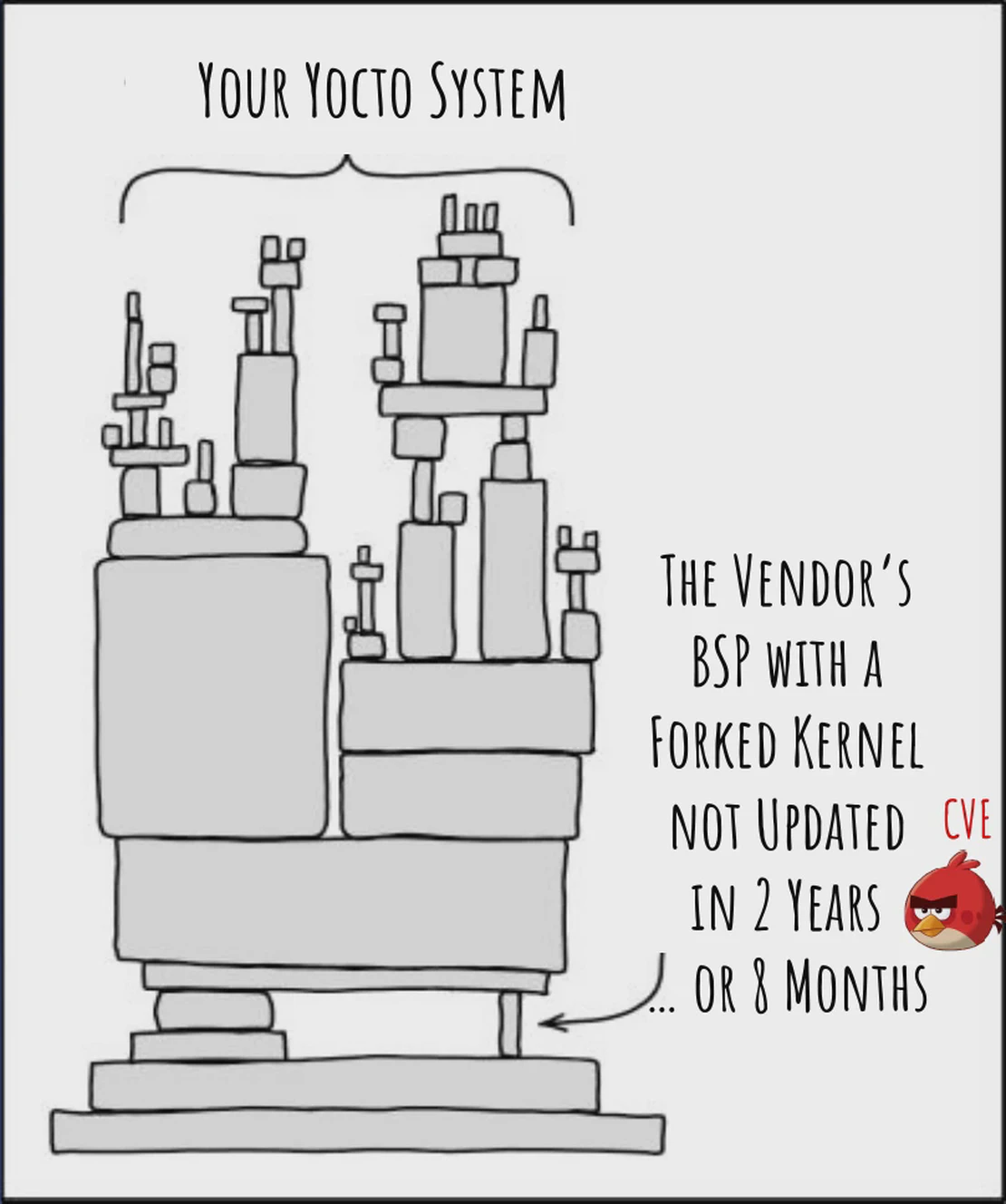
International Women's Day - Why I wear Yocto Shirts on the Embedded World Exhibition
- Anna-Lena Marx
- Personal , Embedded
- March 8, 2024
Today, on the occasion of International Women’s Day, I’d like to give you an insight on working in Embedded as a woman: Why I’m searching for my best Yocto shirt and the nerdiest hoodie when I’m visiting the Embedded World exhibition.
Let’s go back some years to one of my first Embedded World visits. I was still a student doing my master’s degree in Embedded Systems. EW traditionally invites embedded students from all over Germany and adjacent countries on the third day, the student’s day. Together with some of my fellow students, I joined the trip and was looking forward to seeing new trends, talking to people, but also getting an idea where to apply for a job after finishing. At the exhibition, I started exploring together with some peers. Of course, all male. When going through the exhibition and talking to the people at the booths, I quickly recognized a pattern. The staff talked rather to the boys than to me. Mostly not quite obvious and probably not even on purpose. I think it’s about internalized stereotypes. They probably do not think that much about it, but obviously I was not a technically competent conversational partner to them at first sight, even if I asked the questions. I was an addition, an accompanying person from university or marketing. Mostly it was rather subtle, and I did not recognize it that much as the problem it was in the actual moment. But at some point we reached the Intel booth. I asked a question on something I was really curious about, and the male staff member started explaining to me and the accompanying students. During his talk, he started turning more to the boys until he showed me his back. I got a bit angry and told him directly that I would really like to hear the answer to the question I asked. Ok, bad, but human. So why am I telling this, and why do I mention Intel? Because I believe particularly such large companies should sensitize their employees working on a booth.
But this was not a unique situation, nor was it rare or dependent on my professional level. Last year, we observed the same during the Embedded Linux Conference Europe, where I attended as a speaker. Each time I talk to new people at a booth, and I’m accompanied by a male co-worker, they rather try to talk to my co-workers than to me. As written, I do not think that’s on purpose, but it’s a learned stereotype.
As a result, I wear especially Yocto shirts at Embedded World. EW is business focused and there is no time to get to know each other. The first impression decides how people speak with me and thus, if the visit will be successful from this point of view. And this is where Yocto comes in. It is a name in our field. The people know it and get another initial picture of my person - a more technical one, besides it’s a starting point for discussions. Nevertheless, I need to prove my competence a lot more than my male co-workers to earn the same respect. There is less initial trust in women’s technical competences. And that’s the real problem.
Related Posts

How a modern Yocto setup could look like
- Anna-Lena Marx
- November 20, 2022
- Embedded , Conferences
In 2015, we built a sophisticated meeting room information system based on Android Things as a student project. As Android Things was deprecated in 2021, we started to use our Yocto Project experience to develop a maintainable, future proof embedded system.
When setting up a new project from scratch, we focused on proper solutions for
- a maintainable, well supported and patchable build environment for the embedded systems
- version control, reproducible builds and continuous integration
- license management
- a secure and stable update mechanism on image base and
- managing releases The talk aims to show how we build a system that matches our requirements using the Yocto Project, KAS, Gitlab CI, and Mender.io. Besides, we will have a short outlook to the application built in Flutter.
Presented at
- Yocto Project Summit 2022.11, virtual, 2022
- buildingIoT, Munich, 2023
Download original slides (Yocto Project Summit) Download updated slides (buildingIoT)
Read Post
Your Vendor's BSP Is Probably Not Built For Product Longevity - Now What?
- Anna-Lena Marx
- December 4, 2025
- Embedded , Conferences
Vendor Board Support Packages (BSPs) are the standard for bringing new silicon to market, showcasing features, and promising an “easy” start. However, for those of us building products with long-term lifecycles, these BSPs often fail to meet quality requirements. They can be overly intrusive and typically don’t separate feature showcases from the well-maintained base needed for product development. This focus on rapid demonstration frequently results in BSPs which are difficult to maintain, lack transparency, and are built on non-LTS Yocto and kernel versions, making them unsuitable for products expected to last 5, 10, or even 20 years.
Read Post
LoRaWAN in theory and practice: A trip through Munich
- Anna-Lena Marx
- February 24, 2024
- Embedded , Conferences
LoRaWAN (Long Range Wide Area Network) is becoming increasingly popular, thanks in part to public networks such as The Things Network, which allow users to dispense with their own gateways. LoRaWAN also promises potential in terms of range and energy efficiency. But how does the standard perform in practice?
The aim of the presentation is to shed light on the technical background and demonstrate how practicable LoRa is in the field using real tests. It will be shown how the standard behaves in urban and rural areas, how differences in height of the gateway and different antennas influence the transmission quality.
Read Post